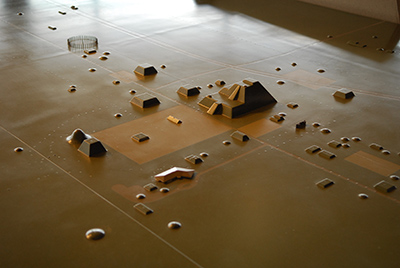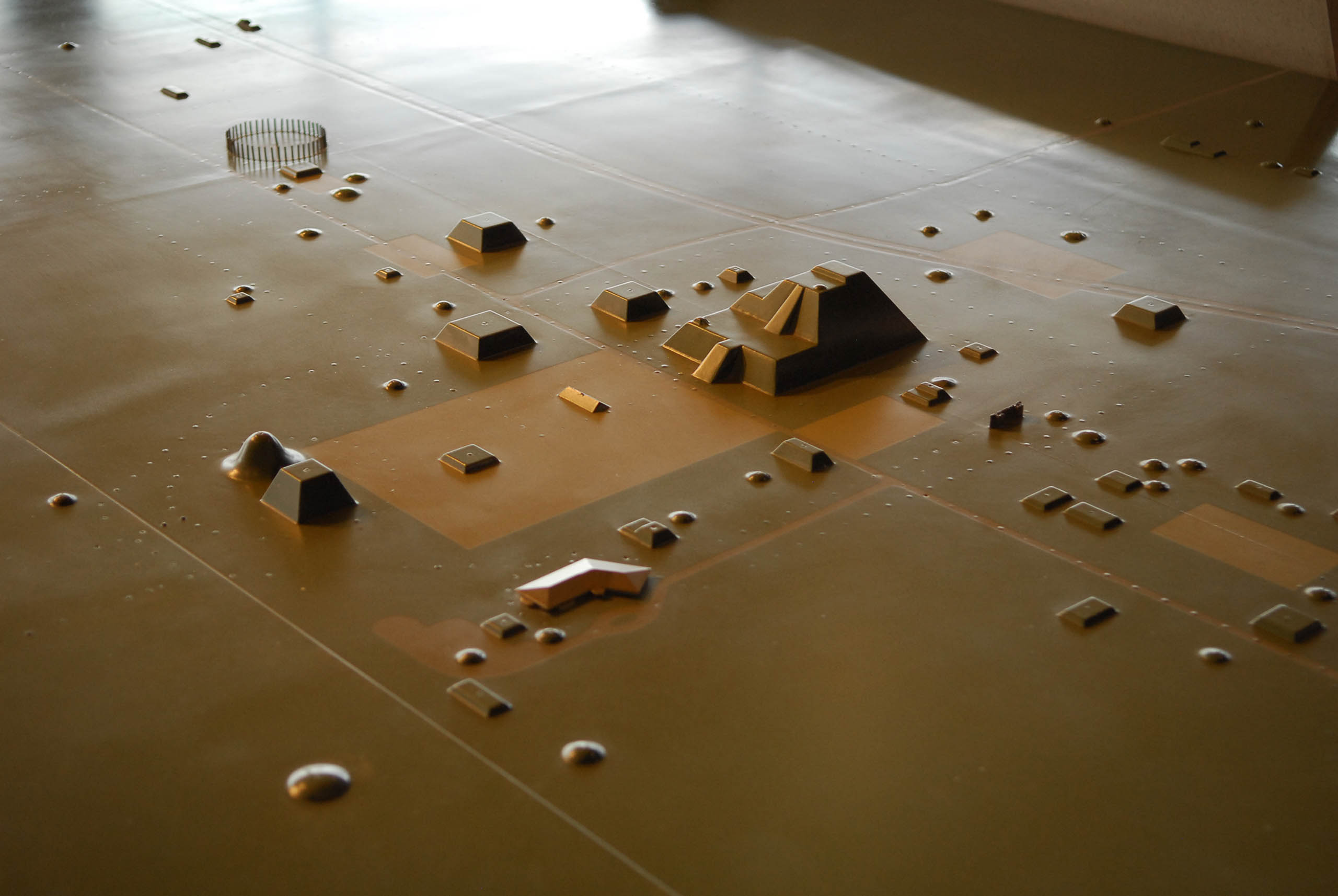



The mounds of Cahokia are the most legible and numerous of the remaining mounds in the region to have survived the massive nineteenth- and twentieth-century industrialization of the floodplain. The region was historically scattered with such complexes, but their consolidated earthen forms proved too alluring for developers and municipalities eager for fill material—and they were scrapped and carted away to build the cities and roads of the greater St. Louis region.
The network of hundreds of mounds was seen, by an aggressively “productive” Anglo settler population, as providing ready fill material for the railroads and towns and building sites that were elevated above the floodplain by the excavation and reallocation of the earth from its mounds. These mounds were artifacts that were both celebrated and erased simultaneously, in what contemporaneous authors described as capitalism”s cycle of creative destruction. Mounds were leveled. Factories were built. Roads and buildings were named after the mound features they replaced. By these means, a large number of mounds and most of the immediately visible traces of Cahokian-era settlements were erased.
Additionally, the core Cahokia mound group itself has undergone a number of shocking and ignoble re-inhabitations—first as the site of a French Trappist monastery (from which Monk”s Mound gets its name), and subsequently as a drive-in movie theater and the site of a large, 1940s tract-home subdivision. This subdivision prompted the call for a Works Progress Administration group of archeologists to conduct an initial study of the Cahokia site, but following the bombing of Pearl Harbor the following year all archeological work was suspended and would not recommence until the mid-1950s. It was here, in 1960, that the new federal policy mandating that an archeological inventory be conducted prior to construction of any federally-funded roads was tested on a large scale. This sort of “salvage archeology” is one of the many paradoxes of American Bottom narrative recovery: it is only through a process ultimately destructive to the site that any funding for work and recovery can be secured.